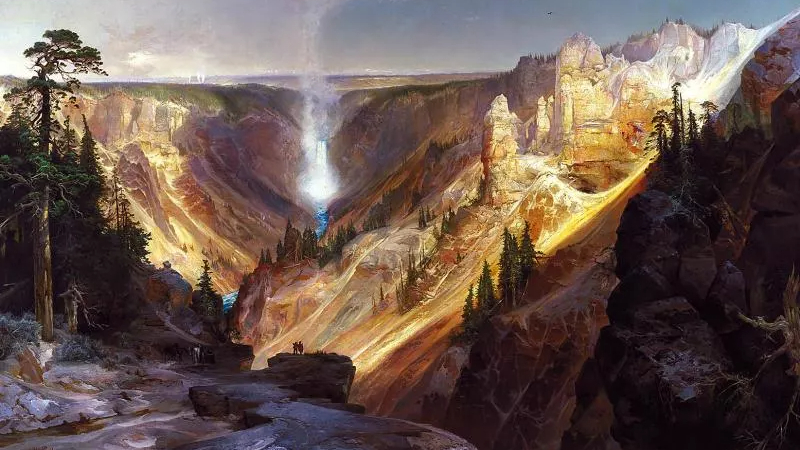Authors:
Historic Era: Era 5: Civil War and Reconstruction (1850-1877)
Historic Theme:
Subject:
Spring 2022 | Volume 67, Issue 2


Authors:
Historic Era: Era 5: Civil War and Reconstruction (1850-1877)
Historic Theme:
Subject:
Spring 2022 | Volume 67, Issue 2

Editor’s Note: George Black is a writer in New York and the author of seven books including Empire of Shadows: The Epic Story of Yellowstone, from which he adapted this essay.
Nathaniel Pitt Langford left Helena a day ahead of the rest of the party. There were two important if unpleasant pieces of business to take care of before his unlikely group of explorers set off for the upper Yellowstone. He had chafed for five years to reveal the truth about this most inaccessible corner of the frontier, to settle once and for all the swirl of rumors about its hallucinatory wonders. Another day would not matter.
Langford was an expert horseman who had ridden alone for thousands of miles across the forbidding landscapes of Montana Territory with a shotgun strapped to his saddle, and he made a formidable impression. He was a handsome man of thirty-eight, with a black beard so dense that birds might have nested in it; a high forehead; a downturned mouth; and an intense, blazing stare. Most of the extant photographs capture his fierce charisma, though they also suggest an absence of humor, the self-righteousness of a man with strong and fixed ideas, and a taste for melodrama.
It was mid-August of 1870, but in one of those capricious turns in the weather that are so common in the Northern Rockies, Langford was caught in a snowstorm near the Three Forks of the Missouri. He took refuge there in the home of a retired army major among a straggle of cabins that some wishful thinker had called Gallatin City. Steeped in the history of the territory, Langford knew that this was the heart of the old fur-trapping country, where Jim Bridger, the most celebrated of the mountain men, and two generations of trappers had fought the implacable Blackfeet over beaver pelts. Usually, they had come out the worse from these encounters—tomahawked, riddled with arrows, dismembered.
Langford knew from the journals of Lewis and Clark that he was walking in their footsteps. President Jefferson's Corps of Discovery had stopped at the Three Forks for two days in July 1805, and it had been one of the most discouraging junctures in their two-year journey. Despite the help of their sixteen-year-old Shoshone guide, Sacagawea, they had failed to make contact with her tribe. The girl was carrying a six-month-old baby and was barely recovered from a life-threatening illness that Lewis had treated with laudanum and saltpeter. Clark was in wretched shape, his feet torn to bleeding shreds from days of tramping over prickly pear and needlegrass. Yet Lewis reveled